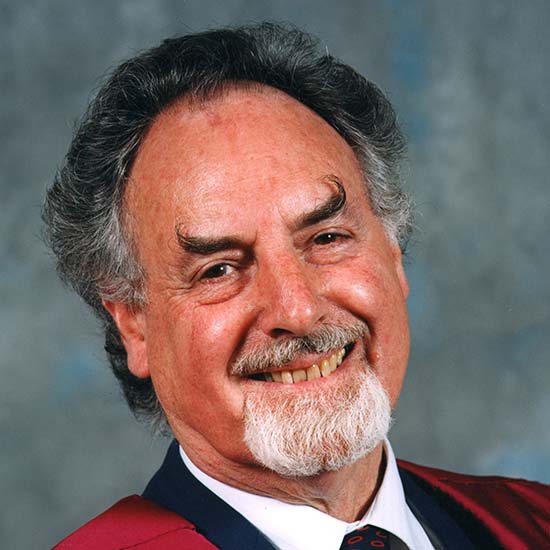Geoffrey Burnstock made major contributions to our knowledge of the structure, function and pharmacology of the autonomic nervous system. In 1972, Geoffrey presented a hypothesis that ATP is a neurotransmitter involved in non-cholinergic, non-adrenergic transmission in the gut and bladder, and coined the term ‘purinergic transmission’.
In 1976, he made the novel proposal that nerves may release more than one transmitter and that ATP is a co-transmitter in most peripheral and central neurons. In 1978, he identified separate purinergic receptors (purinoceptors) for adenosine (P1) and ATP (P2) and, in 1985, P2X and P2Y subclasses. Cloning experiments confirmed P2X (ionotropic) and P2Y (metabotropic) receptors. Purinergic signalling was shown to be important in control of vascular tone and remodelling, bone, kidney, lung and bladder function, mechanosensory transduction and embryonic development.
Later emphasis was on translational research together with clinicians and industry to examine the pathophysiology and therapeutic potential of purinergic drugs for the treatment of disease, including thrombosis, pain, cystic fibrosis, arthritis, atherosclerosis, chronic cough, gut, bladder, kidney and bone disorders and cancer.
Professor Geoffrey Burnstock AC FMedSci FRS died on 2 June 2020.
Professional position
- Honorary Professorial Fellow, Department of Pharmacology and Therapeutics, University of Melbourne
Subject groups
-
Molecules of Life
Cell biology (incl molecular cell biology)
-
Multicellular Organisms
Pharmacology (non-clinical), Physiology incl biophysics of cells (non-clinical)
-
Health and Human Sciences
Clinical pharmacology
Awards
-
Royal Medal
In recognition of his development of new hypotheses challenging the accepted views on autonomic neurotransmission, leading to new advances in the understanding of purinergic neurotransmission. There is now universal recognition of the importance of purinergic mechanisms, not only in the nervous system but also in vascular, secretory and immune systems.

